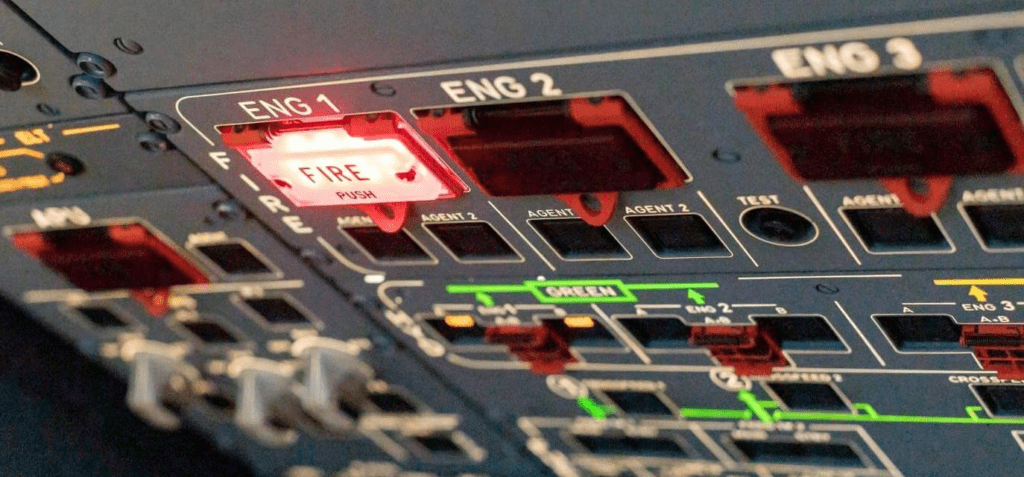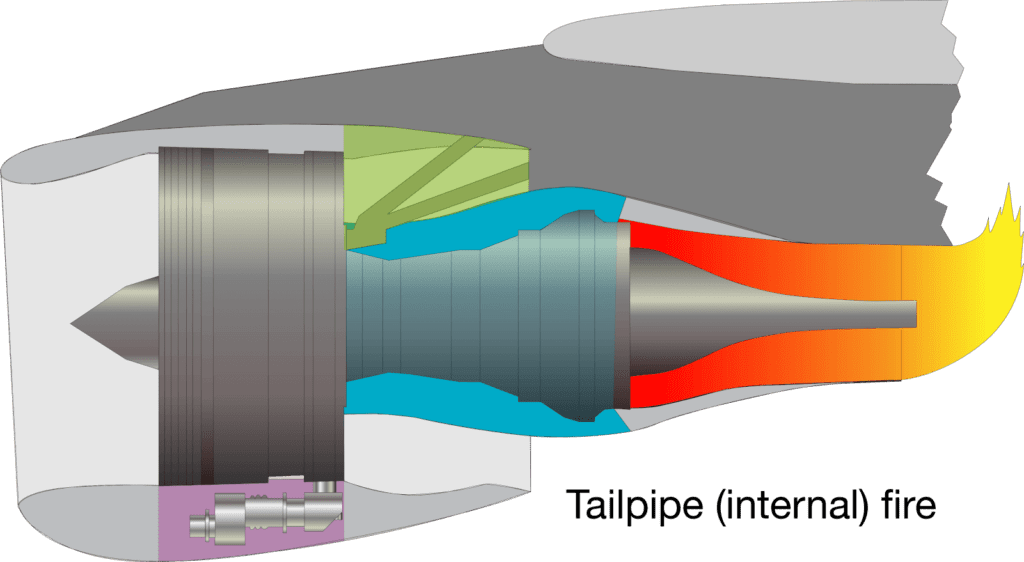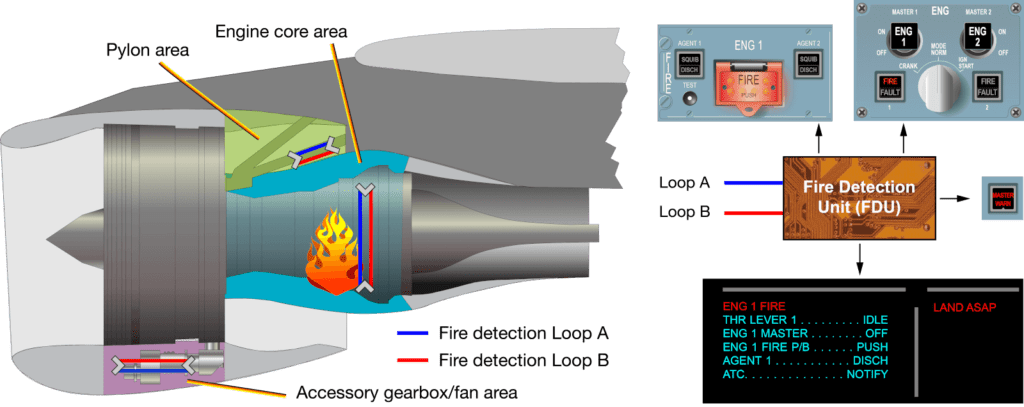


TWO TYPES OF ENGINE FIRE
There are two types of engine fire (fig.1): an engine fire (nacelle fire) and tailpipe fire (internal fire) . Both types of fire affect the engine, but must be treated differently.

Engine fire (nacelle fire)
An engine fire affects the external part of the engine core, but is contained within the engine nacelle. This type of fire can occur on ground or in flight and is usually caused by a malfunction or rupture of a component or pipe, which contains flammable liquids (e.g. fuel, oil, hydraulic fluid). When these liquids come into contact with hot surfaces on the engine case, such as the high pressure compressor, combustor, or turbine, they can self-ignite and cause a fire. This type of engine fire can also be caused by rupture of a part of the engine core causing damage to components and pipes, which can lead to a fire.
The engine fire protection system will detect the fire and trigger the red ENG X FIRE ECAM alert (L ENG FIRE or R ENG FIRE on A220 aircraft). The flight crew must apply the associated engine fire procedure without delay.
Tailpipe fire (internal fire)
A tailpipe fire occurs inside the engine core. This type of fire will only occur during the engine start or shutdown sequence. A tailpipe fire occurs when the engine rotates at a very low speed and residual fuel is present in the combustion chamber or turbine area, or if there is an oil leak in the tailpipe of the engine. The risk of tailpipe fire is higher in the case of a second engine start attempt, because residual fuel may remain in the engine after the first attempted engine start.
The fire detection system does not detect tailpipe fires, because they occur inside the hot sections of the engine core, and therefore, are outside of the fire detection zone. Flight crews can detect tailpipe fires by observing any abnormal increase in EGT during the engine start sequence or if the EGT does not decrease after engine shutdown. Ground crew, cabin crew, or air traffic controllers may also observe a tailpipe fire and must inform the flight crew.
In the case of a tailpipe fire, the flight crew must apply the ENGINE TAILPIPE FIRE abnormal procedure from the QRH. This will ventilate the engine, and the airflow will extinguish the fire and remove any residual fuel or vapor from the engine. On the A220, a tailpipe fire procedure is under study to be introduced in the QRH/FCOM.
After any tailpipe fire, inspection by maintenance is required to check that there is no flame damage to the flaps, wing, or pylon areas.
RELY ON THE ENGINE FIRE ALERT
The detection system for engine fire is composed of dual sensing element loops. They are located in the areas around the engine with the highest fire risk of fire and near compartment air exhausts for overheat detection. These are zones where flammable liquids are present with a potential ignition source, such as the accessory gearbox area, the pylon area above the combustion chamber, the combustion chamber area, and the fan area on certain engines. Each loop is doubled (loop A and loop B) for redundancy purposes. The loops can detect fire or hot air leaks.
The dual sensing element loops are monitored by a Fire Detection Unit (FDU) (A300/A310/A320 family/A330/A340 and A380 aircraft), the Fire Protection Function hosted in CPIOMs J (A350 aircraft), or the Fire Detection and EXtinguishing (FIDEX) Control Unit (A220 aircraft).
Reliability of the engine fire detection system
The design and redundancy of the detection loops ensure a high level of reliability for the engine fire detection system. In the event of an engine fire alert, the flight crew must rely on it.
Source – https://safetyfirst.airbus.com/





